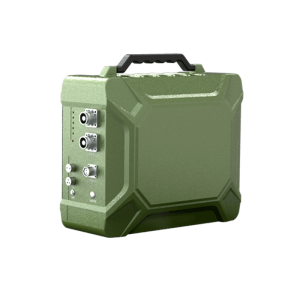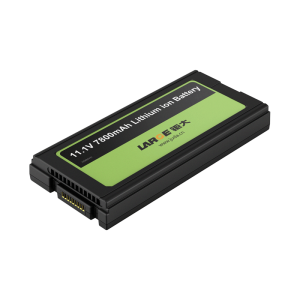how to fix a lithium ion battery that won't charge
18650 Battery Won't Charge-Fixing, Checking And Charging
Jul 09, 2020 Pageview:7940
A 18650 battery that won't charge is a very common issue. Batteries have become a primary need for power and energy sources. Seeing the application of 18650 batteries, it is crucial to know what you can do if the battery isn't charging properly. There are several factors, such as lack of chemicals or thermal trip, that can prevent the battery from charging. Today, we'll discuss how we can fix the 18650 battery that won't charge in detail. Let's start.
How Do You Fix An 18650 Battery That Won't Charge?
When the battery cells discharge deeply, its voltage falls below 2.5 Volts. Most of the lithium-based batteries can't revive if the voltage drops that low. The battery goes into a sleep mode after that as the protection circuit shuts down internal operations. Even the chargers won't do you any good at this point, and the battery will essentially become useless.
At this point, you need to provide enough charge to each cell that can boost the voltage and raise it above the cutoff voltage. Once this happens, the protection circuit will take over the job and increase the voltage regularly. That's how you can salvage an almost dead 18650 battery.
-
Once we know that the voltage is almost zero, it is an indication that the overheating trip has been activated. It implies that the internal membrane of the protection trip is in contact with the battery surface. Such conditions usually arise when the internal pressure inside the battery increases.
-
Start by fixing the membrane, and the battery will start to accept the charge, and the terminal voltage will also increase shortly.
-
As soon as the battery starts to accept a charge, you can put it inside a conventional charger and wait for the battery to charge completely.

Low Temperature Large Current 24V Emergency Starting Power Supply Battery specification: 25.2V28Ah (lithium battery) , 27V300F (supercapacitor pack) Charging temperature:-40℃~+50℃ Discharging temperature: -40℃~+50℃ Starting current: 3000A
Nowadays, you can even find some battery chargers and analyzers that come with a feature to wake-up the almost dead battery. By using such chargers, you can boost the voltage and reactivate the charging circuit that has fallen asleep. The Boost feature applies a small charging current to the protection circuit automatically. If the cell voltage manages to reach the threshold value, then the charger initiates the normal charging cycle.

However, it is recommended not to use such chargers on the batteries that have a voltage lower than 1.5 V per cell for a long duration. It's because copper shunts starts to form inside the cells after some time that leads to partial/total electrical short. As a result, when you try recharging the battery, the cell poses a risk of becoming unstable. It will further lead to excessive heat formation and other anomalies that can start a fire.
Apart from the above, you need to account for the polarity of the cells. Lithium-ion batteries have a delicate chemistry than any other battery type. And as the sleeping battery won't display the voltage, you have to boost it very carefully. If you mistakenly apply voltage in reverse, it can cause permanent damage in the battery pack, making it impossible to revive them.

Low Temperature High Energy Density Rugged Laptop Polymer Battery Battery specification: 11.1V 7800mAh -40℃ 0.2C discharge capacity ≥80% Dustproof, resistance to dropping, anti - corrosion, anti - electromagnetic interference
How Do You Check Your 18650 Battery That Won't Charge?
As multiple issues can lead to the charging problem, you need to check the 18650 battery frequently. Typically it is the thermal trip and lack of chemicals that cause this issue. Hence, the ideal move is to check the internal conditions of the battery.
You can use the following steps to check if the battery is in the condition to recharge or have died entirely.
-
Start by measuring the terminal voltage using a voltmeter or multimeter. If there is a minimum amount of voltage left in the battery, then you'll have to connect it to a parallel connection with another battery that is charging properly and has the same rating and specifications.
-
The connection will induce a positive change in the terminal velocity of the battery. If the voltage doesn't change, then continue doing the same until the battery starts charging.
-
In case the terminal voltage remains zero after multiple attempts to charge the battery, it is a sign that the battery has discharged completely.
Unless you are sure that the battery voltage has dropped down to terminal voltage and it needs a boost, don't risk using the battery pack or recharging it.
How Do You Charge Your 18650 Battery Properly?
A crucial fact to remember about Lithium-ion batteries is that they need designated voltage to operate safely. Whether it is extremely high or extremely low voltage, the battery chemistry and circuit will be affected, and the system will be deemed unsafe for use.
Generally, a 18650 cell requires a dedicated charger to charge the battery safely. Most of these chargers detect the battery specifications and apply the required charging current to each cell. The maximum amount of voltage for 18650 cells is 4.2 V. So, while you are recharging them, keep on checking the voltage increase and unplug them when the voltage reaches 4.2 V per cell.
Since 18650 batteries have high capacity, long service life, high voltage, and ideal performance, most consumers prefer buying a good quality charger for them. Some basic rules of charging 18650 cells include:
-
Keep the voltage up to 4.2 volts per cell
-
Don't let the cells discharge below 3 volts
-
Follow the specified charge current or keep the limit to 0.5 C
-
Follow the same specification for discharge current
-
Always check the charge and discharge temperature as well
-
Monitor the cell voltage frequently to keep the cells balanced
-
Consider the charge cycle and capacity
-
Account for individual cell disintegration issues
-
Ensure that the short-circuit protection of the cells is working
Even if you think that the battery is dead sometimes, it can be revived. Short circuit protection will play a crucial at this time as it will prevent the battery from malfunctioning. And soon, you'll have a working 18650 battery.
- Prev Article: Lithium Batteries For Electric Bikes-Types, Changeability And Cycle Life
- Next Article: Lithium-ion Battery Jump Starter-Beed, Working and Best Buy
Leave Message
Hottest Categories
Custom Solutions
how to fix a lithium ion battery that won't charge
Source: https://www.large.net/news/8nu43pj.html
Posted by: wooddrefoldn.blogspot.com

0 Response to "how to fix a lithium ion battery that won't charge"
Post a Comment